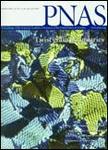版权所有:内蒙古大学图书馆 技术提供:维普资讯• 智图
内蒙古自治区呼和浩特市赛罕区大学西街235号 邮编: 010021

作者机构:Nanjing Agr Univ Coll Plant Protect Nanjing Jiangsu Peoples R China Univ Tennessee Dept Entomol & Plant Pathol Knoxville TN 37996 USA Univ Arizona Dept Entomol Tucson AZ 85721 USA
出 版 物:《PROCEEDINGS OF THE NATIONAL ACADEMY OF SCIENCES OF THE UNITED STATES OF AMERICA》 (美国国家科学院汇刊)
年 卷 期:2018年第115卷第46期
页 面:11760-11765页
核心收录:
基 金:National Natural Science Foundation of China Ministry of Agriculture and Rural Affairs of China [2016ZX08012-004] Agriculture and Food Research Initiative Program [2018-67013-27821] Biotechnology Risk Assessment Research Grant Program from the US Department of Agriculture National Institute of Food and Agriculture [2014-33522-22215]
主 题:evolution resistance management genetically modified dominance sustainability
摘 要:Extensive planting of crops genetically engineered to produce insecticidal proteins from the bacterium Bacillus thuringiensis (Bt) has suppressed some major pests, reduced insecticide sprays, enhanced pest control by natural enemies, and increased grower profits. However, rapid evolution of resistance in pests is reducing these benefits. Better understanding of the genetic basis of resistance to Bt crops is urgently needed to monitor, delay, and counter pest resistance. We discovered that a point mutation in a previously unknown tetraspanin gene in the cotton bollworm (Helicoverpa armigera), a devastating global pest, confers dominant resistance to Cry1Ac, the sole Bt protein produced by transgenic cotton planted in China. We found the mutation using a genome-wide association study, followed by fine-scale genetic mapping and DNA sequence comparisons between resistant and susceptible strains. CRISPR/Cas9 knockout of the tetraspanin gene restored susceptibility to a resistant strain, whereas inserting the mutation conferred 125-fold resistance in a susceptible strain. DNA screening of moths captured from 23 field sites in six provinces of northern China revealed a 100-fold increase in the frequency of this mutation, from 0.001 in 2006 to 0.10 in 2016. The correspondence between the observed trajectory of the mutation and the trajectory predicted from simulation modeling shows that the dominance of the mutation accelerated adaptation. Proactive identification and tracking of the tetraspanin mutation demonstrate the potential for genomic analysis, gene editing, and molecular monitoring to improve management of resistance.